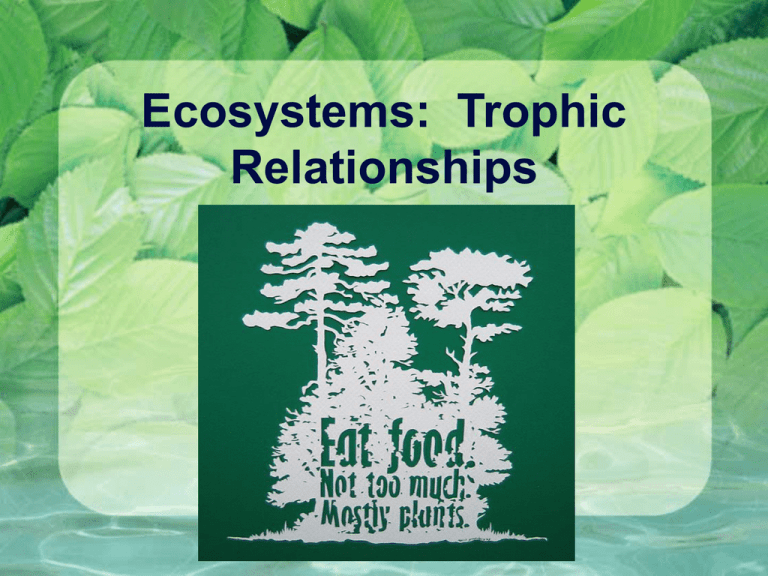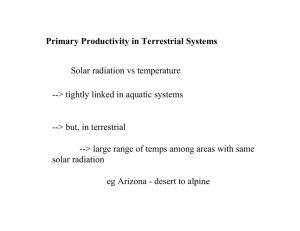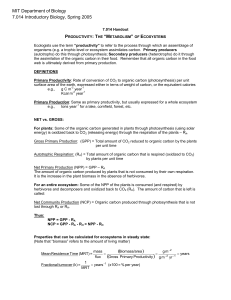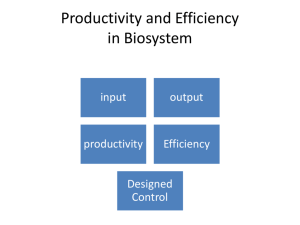File
advertisement

Ecosystems: Trophic Relationships Metabolism Photosynthesis fixes carbon into sugars Respiration breaks down sugars and releases energy Aerobic respiration occurs in the presence of oxygen Anaerobic respiration or fermentation occurs in the absence of oxygen Producers Autotrophs synthesize sugars using energy from the sun or chemicals Plants, algae, and bacteria on land Lichen in early succession and tundra Phytoplankton in the oceans Primary Consumers Herbivores Zooplankton Secondary Consumers Carnivores Tertiary Consumers Top Carnivore Omnivores Most humans Bears Decomposers Bacteria Fungi Break down decaying material Detrivores Feed on waste or dead bodies Insects and scavengers Energy Flow Ecosystems recycle matter but energy flows one way Decomposers break down nutrients so that they may be used by producers Food Chain Shows the path of energy from producer to consumer Arrows show direction of energy flow Trophic Levels Other Pyramids Ecological Efficiency Ranges from 2-40% Typically estimated at 10% Ninety percent loss due to entropy (mostly heat) Primary Productivity Gross Primary Productivity (GPP) is the rate at which solar energy is converted to biomass Net Primary Productivity (NPP) is the energy stored minus the energy used for metabolism Measured in kcal/m2/yr NPP by Ecosystem Type Total NPP by Ecosystem Type Food Web Trophic Level Question Each week, an owl must eat an average of five mice weighing 10 grams each in order to survive. How much plant material would each mouse have consumed? Solve this problem, and include set up and units. Explain how this scenario relates to trophic levels. Assume that energy and mass are proportional with the same constant of proportionality for each of these organisms. The Answer… It is estimated that only 10 percent of the energy at each trophic level is available to organisms at the next higher level One owl must consume five mice per week in order to survive. More Answer… Entropy occurs and not all of the grass is converted to biomass. A 10-gram mouse would convert 10 percent of the plant material, so each mouse would have to consume 100 grams in order to survive. More Answer… The mouse utilizes some of this grass for normal living functions, plus releases some as waste material. Grass is at the producer level. It makes up the greatest biomass, it is the most numerous, and it has the greatest combined energy of the system. More Answer. As herbivores, mice would make up the next trophic level, and have less biomass, fewer individuals, and less stored energy than the trophic level below it.











